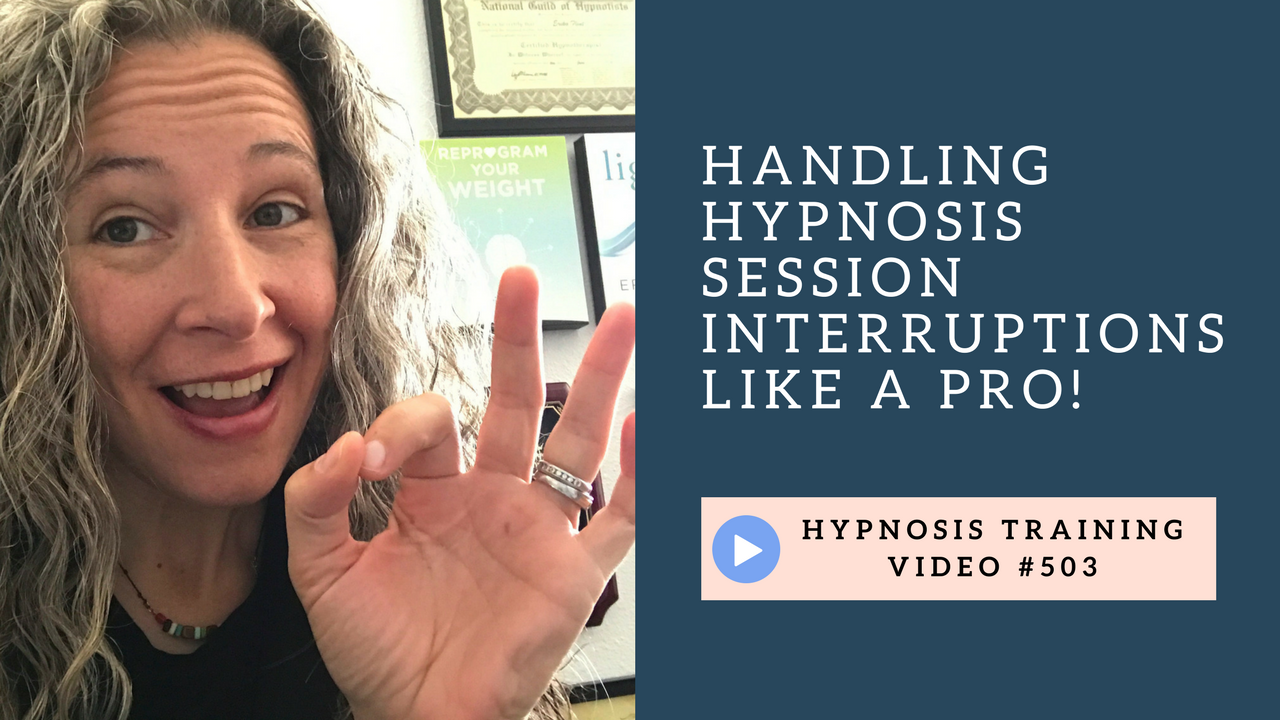Identifying the Four Types of Negative Self-Talk with Hypnosis Clients
By Erika Flint, BCH, MCPHI, OB
Negative self-talk directly impacts the story our clients are telling themselves about their lives and their current situation. It is at the root of their limiting beliefs and is connected to what is driving their presenting issues as well.
The more we understand it and can clarify, for ourselves at first - what it is, the more we can help our clients tell a new story about their life. One of redemption and relief, compassion and courage.
These four types of negative self-talk come from the Mayo Clinic. This article helps the hypnotist get better results for clients by recognizing these nuanced types of negative self-talk.
There are solutions provided for each type, however this article assumes you’re doing 5-PATH© and 7th Path © with your client already which inherently addresses this issue. This is additional information that you will find helpful.
In an earlier 5-PATH© Journal article, Reframe Negative Perception for Clarity and Results, negativity bias is explained which is helpful to read and to fully understand this article.
Filtering: Only Seeing What’s Wrong
Filtering is only noticing what is wrong and where the negative aspects of a situation are magnified. For example, we remember the one negative comment instead of the 10 positive ones.
This could be considered classical negative self-talk and impacts all of the other types because it limits perspective - it limits what we, and our clients notice.
A great example of this is with our weight-loss clients. Many people on a diet, or wanting to lose weight will have one cookie and decide that the entire day is ruined - so they might as well go eat the rest of the box of cookies. This is a sneaky way the feel-bad-distract cycle from Cal Banyan’s The Secret Language of Feelings keeps our clients locked in bad behavior.
One of my clients, Michelle, reported having a terrible week because she ate pizza.
“What do you mean?” I asked, and she proclaimed, “I had a piece of pizza!”
‘Pizza’ in her mind was never allowed while on a weight loss journey, so she automatically assumed it was bad.
I then asked her how many pieces she would have had in the past, before hypnosis with me?
“Four, then the other four the next day.”
Michelle then goes on to explain that instead of four, she had one piece and a salad and her sister took half of the rest home. She ate another piece for lunch the next day.
“So, you only had 2 pieces instead of 8? And you didn’t over eat the rest of the day, and you lost weight?” I asked.
Michelle smiled and paused. I could tell it was sinking in for her - that this is how you do it!
From that moment on, she started focusing and noticing all the ways she was being successful - noticing what is working, and that is what helped her stay on track and motivated.
Helping our clients to notice what is working - noticing the incremental success, will keep them inspired and motivated to continue.
Personalizing: Think - Blame
Personalizing is when our clients blame themselves for everything. If something goes wrong - it’s their fault. It’s the “It’s not you - it’s me” perspective.
There’s some benefit in this perspective to our client - they are noticing a level of responsibility in their life. However, the responsibility they are assuming is often and largely irrational - impossible to achieve.
For example, it’s not our client’s job to make sure everyone in their life is happy - yet many of our clients blame themselves for not being able to “make” someone happy. This can show up in little things, like over a holiday and the family event turns into an argument instead of the joyful occasion our client had intended. And they blame themselves for it not going well. When in reality - there was a separate argument that had nothing to do with your client that caused the primary disruption.
The go-to solution here, which can often work in the pre-hypnosis interview, is to simply ask your client to do a reality check. Is it really their fault? Is it really their job? This is similar to the reality check and self-coaching described in The Secret Language of Feelings.
For Michelle, personalizing showed up for her at work. She felt it was her job to make sure everyone in her department was on track. She wasn’t the manager and didn’t have the responsibility, however she’d been working at the office long enough to feel an overblown sense of responsibility for the growth of the company.
After a reality check Michelle realized her company is also to blame. They’re not investing in their employees - and there’s little she can do to shift that. So, she began focusing on doing good work, where she can. Her sleeping improved, and she enjoyed work more.
Catastrophizing: The Worst-Case Scenario Game
This is when clients play the worst-case-scenario game with everything in their life. Clients that do this tend to be analytical, and are accustomed to solving problems in their life using their mind and other rational thinking.
You may wonder about rumination - and rumination, although not identified by the Mayo clinic as one of the four types, is similar to catastrophizing. The difference is that catastrophizing is worrying about the future, and rumination is focusing on the past.
Both are problems where the brain is seeking solutions - solutions for the future, or solutions to the past to solve a perceived future threat.
It can become a problem when clients have muddled thinking and can’t sleep. They can’t turn their mind off - it continues running scenario after scenario looking for solutions.
One solution that works, is to focus our clients’ minds on an alternative - the best-case scenario game. Instead of focusing on everything that can go wrong, suggest to your client they focus on everything that can go right. Or even better, one thing that can go right. Get that super computer mind focused on the positive outcome and how to address it for maximum life enjoyment. This can take some work and adjustment.
I like to point out here that this is often something smart brains do! Get your client to notice that they’re mind is thinking a lot. That this is how their mind works, and so they need not feel bad about it behaving this way. Instead we’ll task it to solve “problems” that are enjoyable.
Michelle’s super computer brain showed up at night all the time - she had a hard time sleeping. Once she started focusing on all the places she was going to visit once she lost the weight, her mind let her drift off to sleep.
Polarization: Black and White Thinking & Perfectionism
Polarizing is when clients see everything as black and white. It’s either this or that. They either get first place, or they’re a loser. This is where perfectionism shows up in our office.
My favorite go-to technique for perfectionism is to help clients understand that instead of being perfect - they can do everything with excellence. It’s more realistic, and achievable.
Polarizing thinking can also impact our client’s decision making. If your client reports being “stuck” between only two options, they may be stuck in polarized thinking.
One effective option here is to use the Third Option Technique. The Third Option Technique is done during hypnosis, and you simply suggest to the hypnotized client that there is a third option, and that it’s easy for the mind to present what the third option is to the client. Wait for, and encourage insight.
Michelle was having an issue with a neighbor that was causing a problem at home. It was not part of why she was coming in for hypnosis, however it was greatly impacting her ability to be successful. She was locked in polarized thinking and could see only two options for her solution - neither were palatable to her.
In hypnosis, I asked her to imagine a third option, one that serves the highest good and purpose. An idea came to mind. She would talk to her neighbor first, in person. The solution worked.
Allow your clients to prove to themselves how amazing they are. Allow the mind to show them all the possibilities!
Start Noticing Negative Self Talk Now
If you’re already doing this work with clients, great! I didn’t always, and what I noticed is that not all clients appreciate having their language patterns pointed out to them.
This means I don’t always point out negative self-talk to my clients unless they bring it up - which a lot of them do! Or they’re obviously being mean to themselves and I feel like I need to mention it.
What I am doing is noticing it, and helping to shift their thinking in the pre-hypnosis interview, then follow up in the hypnosis session and during future progression where they can test out their new story.


-1.png)
